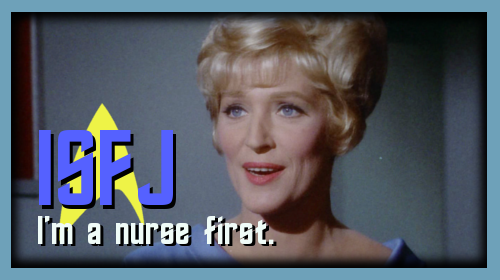The Protector, The Cultivator, The Steward
Funny how if you step back and look at your life, you discover that you’re a supporting character in someone else’s life.
I suspect that Christine Chapel’s years on board the Enterprise were not her best. For the rest of the crew, the five-year mission was a time of adventure in which they pursued greatness and became legends. For Chapel, it was a detour in the middle of her career, before she got back on track.
Behind-the-scenes, actress Majel Barrett, wife of Gene Roddenberry, was initially cast as the steely Number One, first officer of the Enterprise in Star Trek’s original pilot. When the show and the character were rejected, she donned a platinum wig and a miniskirt and finagled her way into a part on the new version of the show.
She didn’t get a lot of love—from the fans, or from her unrequited romantic interest, Spock. As progressive as it was, Star Trek still wasn’t ready for the kind of woman leader Majel could deliver. But she’s in there, hidden around the edges of a personality type as much maligned and underestimated as Nurse Chapel herself.
Dominant Function: (Si) Introverted Sensing, “Relive the Experience”
Christine Chapel presents herself as calm, patient, and practical. She’s rarely less than composed, even when assisting in surgery on a Vulcan in the middle of an attack on the ship (“Journey to Babel”). When Spock tries to sit up and talk shop during the operation, she quickly puts him out.
Chapel takes care of the practical needs of her patients—making sure they eat and rest, and in Uhura’s case, receives tutoring (“The Changeling”). In the first movie, she provides personal details of navigator Ilia’s life to help the probe version of the woman recall her memories.
Christine carries a torch for her missing ex-fiance for several years (“What Are Little Girls Made Of?”). In fact, it’s the whole reason she joined Starfleet, leaving a career in bio-research in hopes of exploring the galaxy for her lost love. She believes beyond reason that Roger Korby is still alive, and recognizes his voice when the Enterprise makes contact. She still trusts him at first, but begins to have doubts when his motivations contradict his once ethical character. She’s dubious of the authenticity of his android creations, disagreeing with him that they’re as good as human—and she’s upset that she can’t tell the difference between the real Kirk and the android Kirk.
In the end, she discovers that Roger is an android duplicate, but by that point she’s already decided he’s not the same man she once loved. “Everything you’ve done has proved it isn’t you,” she tells Roger. He ends himself, and Chapel returns to her duties on the Enterprise.


